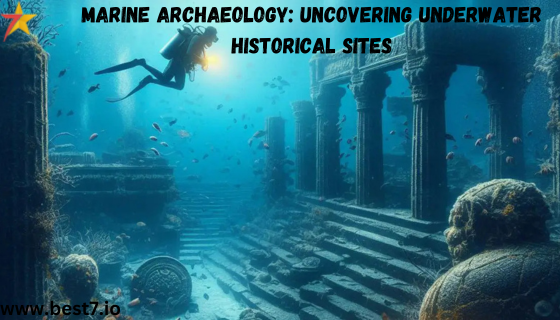
Marine archaeology has been essential in the conservation and analysis of underwater archaeological sites. The study of maritime history and the practice of underwater archaeology reveal artifacts left by ancient civilizations submerged under the sea, as well as evidence of trade networks and sunken ships.
Understanding Submerged Cultural Heritage Through Product Analysis
Through the investigation of material culture and other remnants preserved underwater—a process also known as product analysis—marine archaeology helps illuminate maritime history. This field provides a gateway to understanding the submerged cultural heritage of civilizations.
Shipwrecks and Lost Cities: Tales Beneath the Waves
Shipwrecks and lost cities tell fascinating stories of pirates, smugglers, and ancient treasures hidden in the depths. From wooden wares and coins to priceless gems, these artifacts reveal a complex history of trade and human ambition. Many items remain preserved as echoes of past journeys, leaving valuable insights for future discoveries.
Marine Archaeology’s Role in Preserving Cultural Identity
Marine archaeology is not only about uncovering history but also about preserving cultural heritage. Underwater archeologists have found shipwrecks, settlements, and ancient artifacts that allow us to understand distant ways of life and maintain cultural identity for future generations.
The Uluburun Shipwreck: A Window into Ancient Trade Networks
The discovery of the Uluburun shipwreck near Turkey exemplifies marine archaeology’s contributions to understanding historical trade networks. This Late Bronze Age ship carried weapons, metals, and ceramics that testify to trade between distant cultures. However, natural decay and preservation challenges underwater highlight the need for advanced mapping and excavation techniques.
Future Prospects for Underwater Conservation Techniques
By 2035, advancements in underwater mapping and excavation techniques could make preservation efforts more effective, increasing the protection of ancient underwater sites. These improvements hold promise for the future of preserving submerged artifacts.
The Challenges and Innovations in Underwater Archaeology
Underwater archaeology faces unique challenges compared to land-based practices. Ocean conditions, high pressure, and limited visibility require specialized technology such as sonar, mapping, and robotic devices. However, these tools remain costly, often limiting research expedition capabilities.
Case Study: Mapping the Antikythera Shipwreck
In 2015, sonar technology was used to map the Antikythera shipwreck, though limitations in sonar resolution caused breaks in the recorded data. This case highlights the need for advancements in underwater mapping to overcome technological obstacles in archaeology.
Shipwrecks as Time Capsules of Maritime History
Shipwrecks serve as time capsules that reveal the movements and history of ancient civilizations. Each wreck site preserves objects, cargo, and designs that inform us about trade, military campaigns, and cultural exchanges, underscoring the importance of maritime history in archaeology.
The Urgency of Protecting Shipwrecks from Natural Decay
Studies indicate that 40% of known shipwrecks are at risk of erosion, which complicates efforts to preserve cultural artifacts. Advancements in conservation methods could safeguard up to 60% of these at-risk shipwrecks by 2050, preserving valuable historical insights.
Conservation Efforts: Overcoming Preservation Challenges
The preservation of underwater artifacts is complex due to environmental challenges like corrosion, slow-moving water currents, and remote site locations. Continued efforts to improve stabilization, legal protection, and environmental monitoring are essential to safeguard underwater heritage.
Future Conservation Techniques and International Collaboration
From improved the underwater stabilization methods to increased international collaboration, marine archaeology’s future promises better preservation techniques. By 2050, sustainable methodologies and digital preservation efforts may further enhance the conservation of oceanic history.












